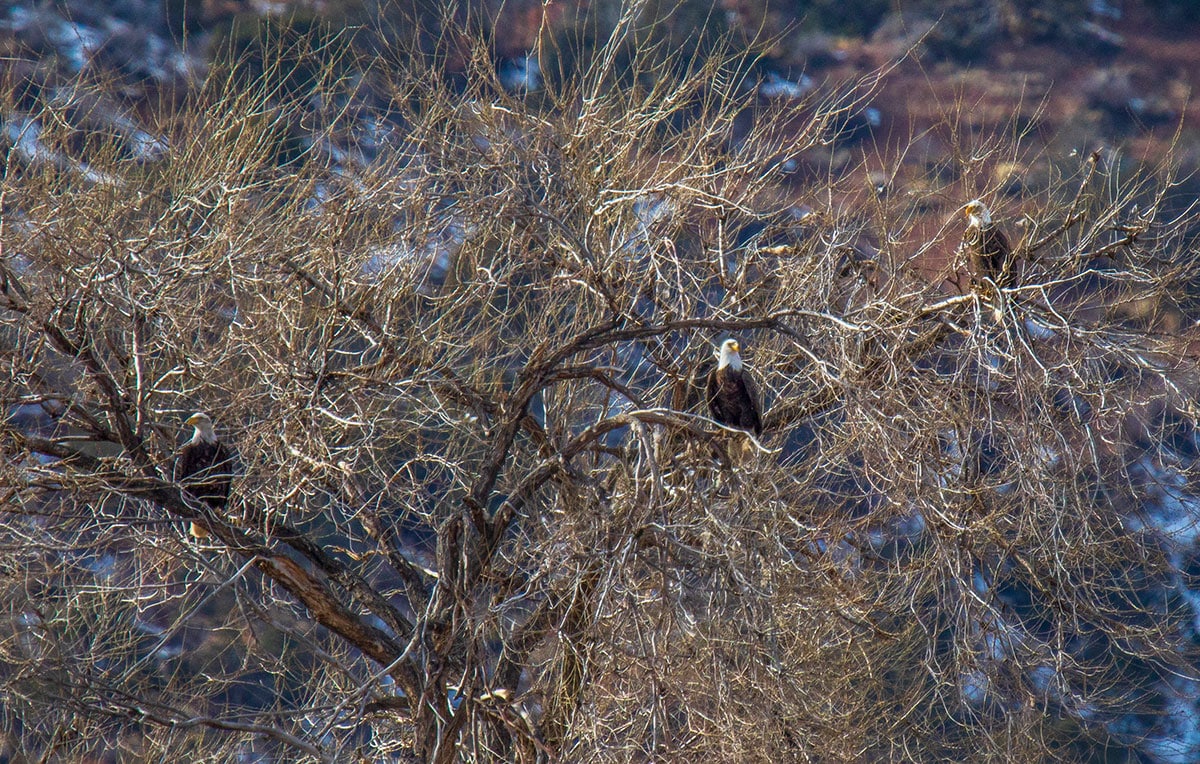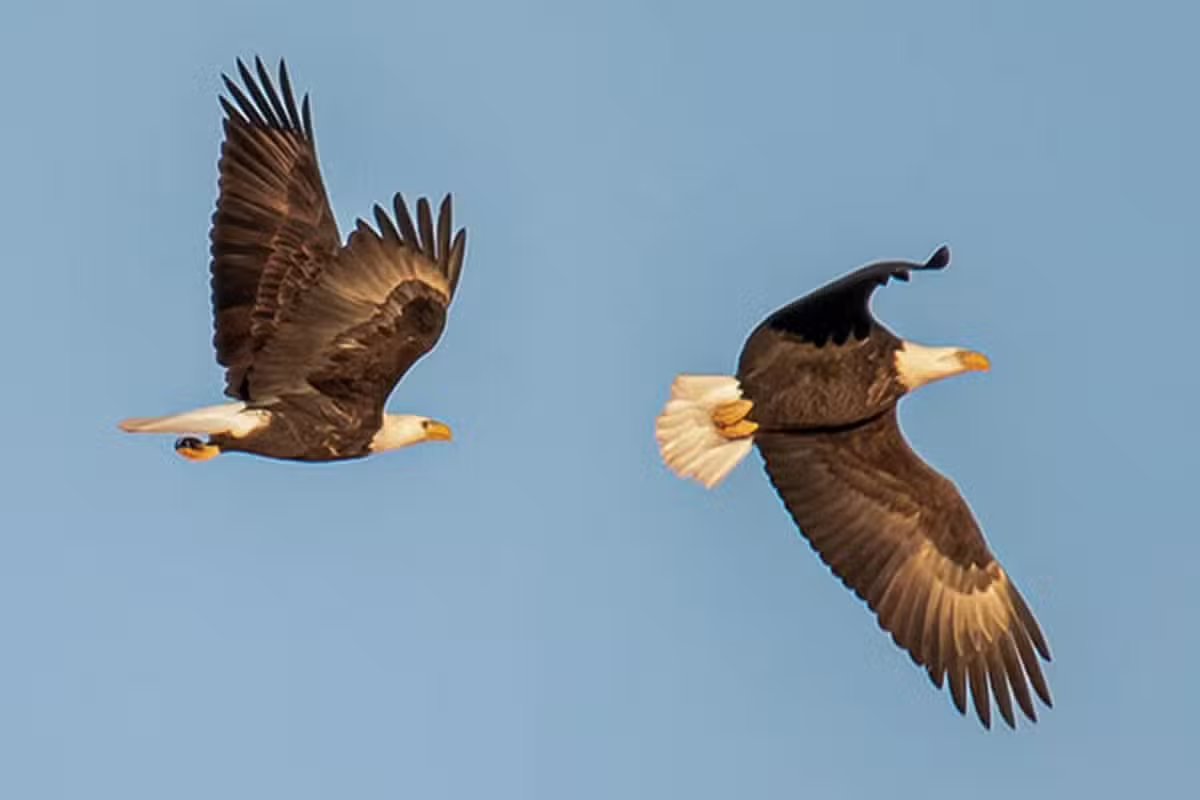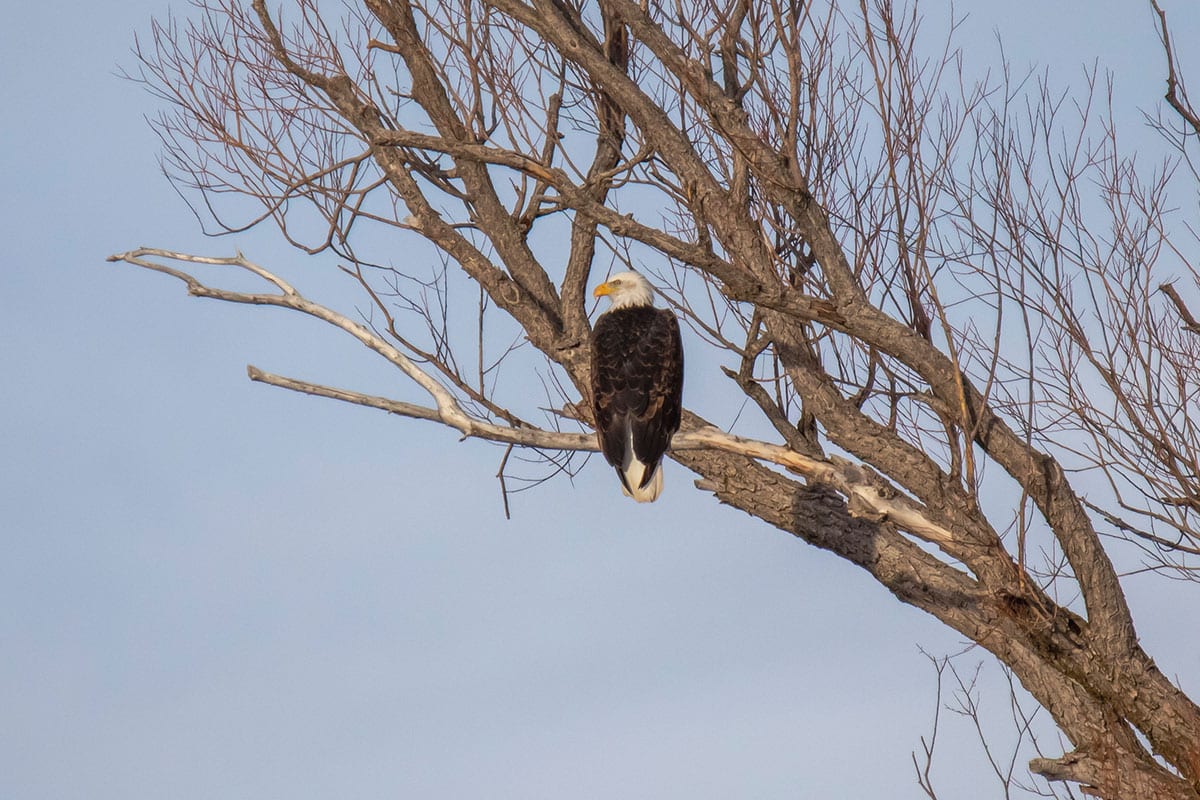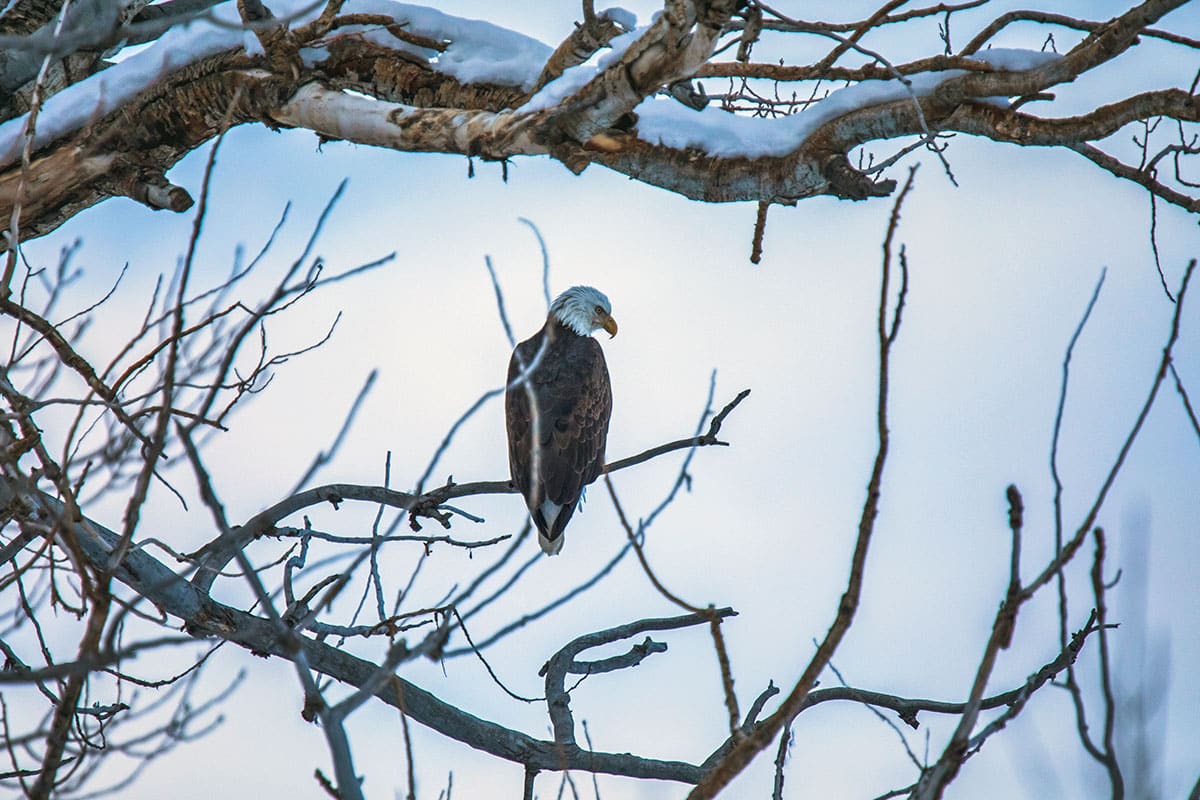Bald Eagles - Winter in utah
Author: Mark WadeBald eagles are known to migrate to Utah during the winter months primarily in search of food and milder temperatures. These majestic birds typically come where they have been breeding such as Alaska, other parts of the Northern United States, and Canada. Utah provides a favorable wintering location for bald eagles due to its open water sources and availability of fish, which make up a significant portion of their diet.

When are Bald Eagles in Utah?
In Utah, bald eagles usually arrive in late fall or early winter and stay until early spring. During this time, they can be seen congregating near open bodies of water such as lakes, reservoirs, and rivers where they can get their fish.
Where can Bald Eagles be found in Utah?
Some popular wintering sites for bald eagles in Utah include the Bear River Migratory Bird Refuge, Farmington Bay Waterfowl Management Area, Utah Lake, and the Great Salt Lake. Other areas include Weber River area, near Croydon, Echo Reservoir, Willard Bay Reservoir, and Sanpete County.

Family Life
Bald eagles typically reach maturity around four to five years of age. They form monogamous pairs and often mate for life. Courtship rituals involve aerial displays and intricate bonding behaviors. Once paired, they build large nests in tall trees near water, where they raise their young.

How can I see bald eagles in Utah?
To view bald eagles in Utah, January and February are prime months for eagle watching as they reach peak numbers during this time in winter. Birdwatchers and nature enthusiasts can often spot bald eagles perched on trees, on poles, fences, near water, or soaring overhead in search of prey.

Summary
Bald eagles come from northern breeding grounds in search of more ideal living conditions for the winter and typically stay in Utah from late fall to early spring. Keep your eyes peeled for these beautiful birds near bodies of water such as lakes, reservoirs, and rivers.

